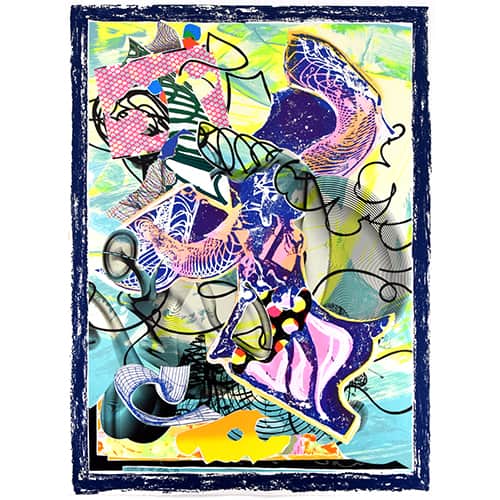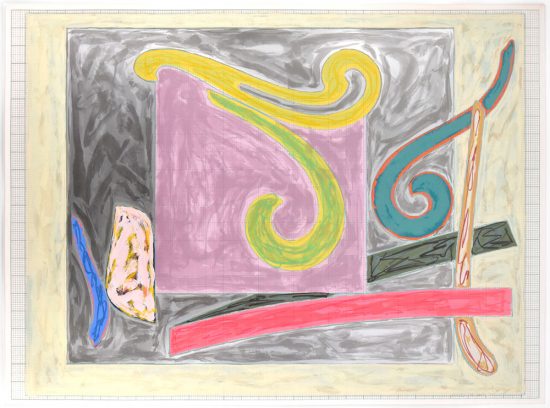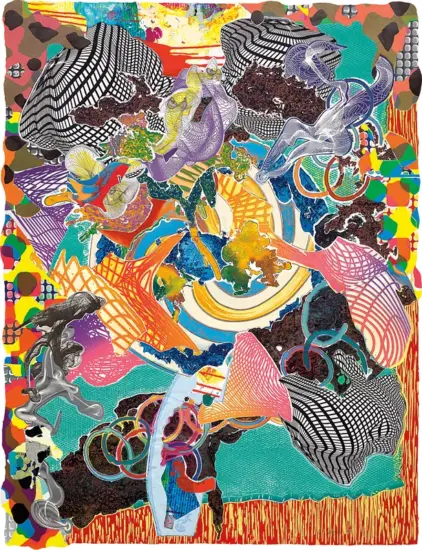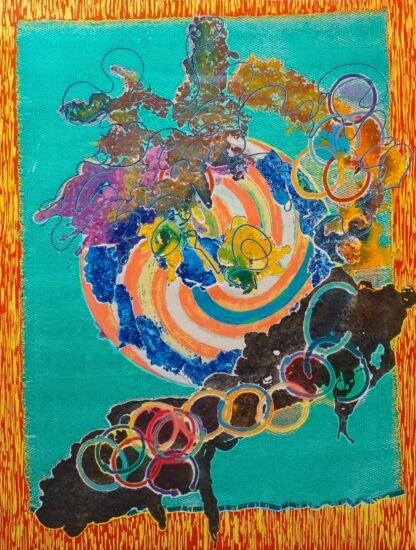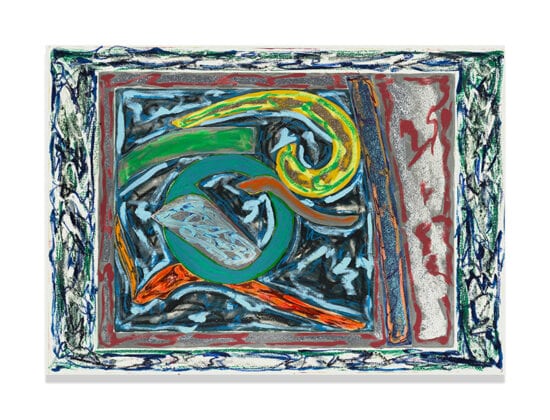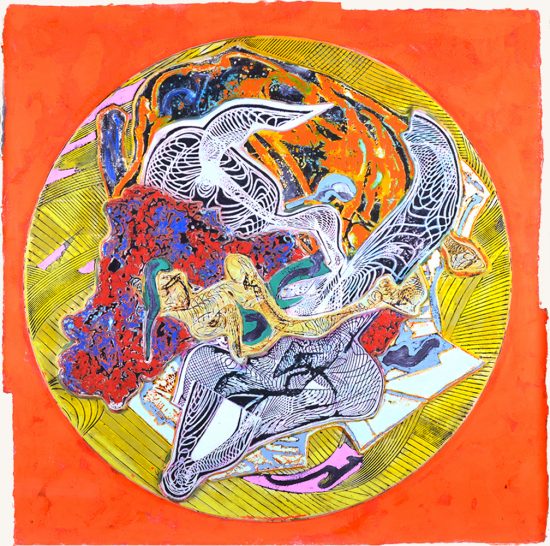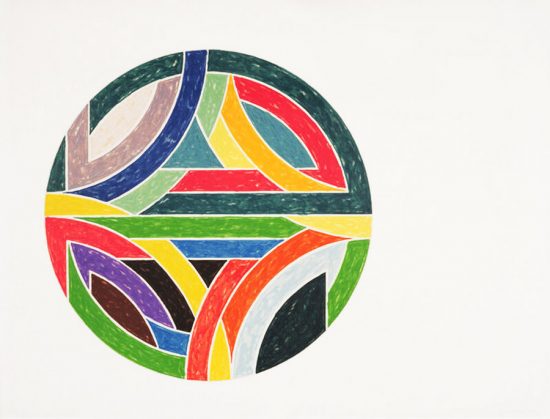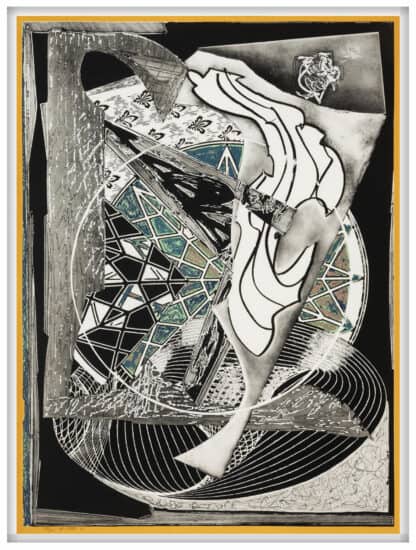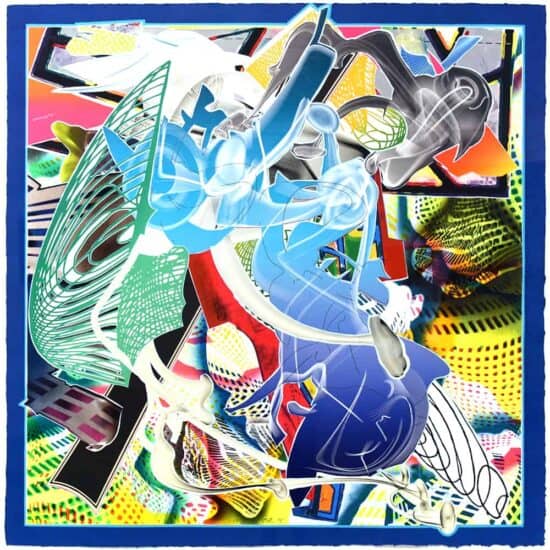
Key Highlights
- Frank Stella was a renowned abstract artist known for his minimalistic style iconic "Black Paintings."
- He had a impact on the art, with his works showcased at prestigious museums such the Museum of Modern Art and the Whitney Museum of American Art- Stella's artistic saw him transition from minimalism to maximalism, experimenting with new materials and forms throughout his career.
- His iconic artworks are characterized by bold colors and geometric shapes, which have been analyzed for their abstraction and aesthetic appeal.
- Stella collaborated with architects and other artists, and his notable exhibitions and partnerships helped solidify his place in contemporary art history.
- Stella's legacy as a pioneer of abstract and minimalist art continues to inspire younger generations of artists and shape the art world.
Introduction
Frank Stella was a towering figure in the field of abstract art for over six decades. Born on May 12, 1936, in Malden, Massachusetts, America, Stella's artistic journey began at a young age and went on to leave a lasting impact on the art world. He is widely regarded as one of the leading abstract artists of his generation, known for his innovative approach to painting and sculpture. As a painter, printmaker, and sculptor, Stella's work has influenced the areas of minimalism and post-painterly abstraction.
Stella's artistic career can be characterized by his exploration of minimalism, maximalism, and the use of bold colors and geometric shapes. He gained recognition for his groundbreaking "Black Paintings" series in the 1960s, which established him as a prominent figure in the Minimalist movement. Throughout his career, Stella continued to push artistic boundaries, experimenting with new materials and forms such as collages. This legacy is celebrated in the exhibition "Frank Stella: Experiment and Change," curated by Bonnie Clearwater and currently on view at the museum's 60th anniversary celebration presented by AutoNation.
His works have been exhibited at renowned institutions such as the Museum of Modern Art and the Whitney Museum of American Art. Stella's collaborations with architects and other artists have further cemented his influence and legacy in the world of contemporary art.
In this blog, we will delve into the key highlights of Frank Stella's career, his artistic evolution, iconic artworks, collaborations, exhibitions, and his lasting contribution to contemporary sculpture. We will also explore the personal side of Frank Stella, his philosophy on art and life, and his impact beyond the canvas. Join us as we pay tribute to the legacy of this remarkable artist through the lens of his exhibition catalogue.
The Early Years of Frank Stella
Frank Stella was born on May 12, 1936, and passed away May 4th, 2024. He was born in Malden, Massachusetts, a small town located just outside of Boston. He grew up in Malden and later in the neighboring town of Melrose. Stella's passion for art was evident from an early age, and he pursued his artistic education at Phillips Academy in Andover, Massachusetts. After completing high school, Stella went on to study painting at Princeton University, where he honed his skills and developed a deep understanding of abstract expressionism under the guidance of renowned artists and art historians.
Birth and upbringing
Frank Stella was born on May 12, 1936, in Malden, Massachusetts. He spent his early years in Malden and later moved to the neighboring town of Melrose. Growing up in Massachusetts, Stella was exposed to the rich cultural heritage of the region, which played a significant role in shaping his artistic sensibilities. The vibrant art scene in nearby Boston also provided him with inspiration and opportunities to explore his artistic interests. Stella's upbringing in Massachusetts instilled in him a deep appreciation for art and set the stage for his future artistic endeavors.
Initial influences and education in art
Frank Stella's journey as an artist began at Phillips Academy in Andover, Massachusetts. There, he received a solid foundation in art education and was exposed to various artistic styles and techniques. It was during this time that Stella discovered his affinity for abstract expressionism, a movement that would heavily influence his early work.
After graduating from Phillips Academy, Stella continued his artistic education at Princeton University, where he studied under the guidance of renowned art historian William Seitz and abstract expressionist painter Stephen Greene. Stella's time at Princeton, as well as his inclusion in exhibitions at Oberlin College and the Museum of Modern Art, further deepened his understanding of abstract expressionism and introduced him to the works of influential artists such as Jackson Pollock. He was also invited by Harvard University to give the Charles Eliot Norton lectures in 1983-84, where he called for a rejuvenation of abstraction in art. These lectures were later published by Harvard University Press in 1986.
The combination of his education at Phillips Academy and Princeton University, along with exposure to abstract expressionism, laid the groundwork for Stella's artistic development and set the stage for his future exploration of different artistic styles and movements.
The Evolution of Stella's Artistic Style
Throughout his career, Frank Stella's artistic style experienced a notable evolution. He began as a prominent figure in the minimalist movement, known for his iconic "Black Paintings" series. These monochromatic works, created using black household enamel paint, became synonymous with minimalism in the 1960s.
As Stella's artistic journey progressed, he transitioned from minimalism to maximalism. His works became more elaborate, incorporating new materials and exploring different forms. This shift allowed him to push the boundaries of his artistic expression and create visually arresting pieces that captivated audiences.

From Minimalism to Maximalism
Frank Stella's journey from minimalism to maximalism marked a significant evolution in his artistic style. While minimalism emphasized simplicity and geometric forms, maximalism embraced complexity and intricate designs.
Stella's transition from minimalism to maximalism allowed him to explore new artistic possibilities. His works became more elaborate and dynamic, incorporating vibrant colors and intricate patterns. This evolution showcased Stella's versatility as an artist and demonstrated his ability to adapt and push the boundaries of his chosen medium.
By embracing maximalism, Stella was able to create visually captivating works that challenged traditional notions of art. His transition from minimalism to maximalism further cemented his place as one of the most influential artists of his generation.
The "Black Paintings" and their impact
One of Frank Stella's most iconic contributions to the art world is his "Black Paintings" series. Created using black household enamel paint, these monochromatic works became synonymous with minimalism and made a profound impact on contemporary art.
The "Black Paintings" series was first showcased at the Museum of Modern Art (MoMA), where Stella made his debut on the art scene. The series challenged traditional notions of painting, presenting images without any illusion and emphasizing the importance of the entire composition. Stella's intention was for the audience to see the paintings as a whole, rather than focusing on individual components. The series, which featured works by artists such as Robert Rauschenberg and Jasper Johns, was also featured in several other exhibitions, including the Solomon R. Guggenheim Museum's The Shaped Canvas (1965) and Systemic Painting (1966), further solidifying Stella's impact on the art world.
The "Black Paintings" series marked a turning point in Stella's career and solidified his place as a leading figure in the art world. Its minimalistic and austere aesthetic influenced countless artists and played a significant role in the development of contemporary art.
Experimentation with new materials and forms
In addition to his exploration of different artistic styles, Frank Stella was known for his experimentation with new materials and forms. He constantly pushed the boundaries of traditional art by incorporating unconventional materials into his works.
Stella's experimentation led him to explore the use of stainless steel and carbon fiber in his art. These materials allowed him to create three-dimensional sculptures and transform the traditional canvas into dynamic and visually striking pieces. By pushing the boundaries of traditional materials, Stella was able to experiment with new materials and forms, such as fiberglass, to create innovative and thought-provoking artworks that challenged traditional notions of art. His use of fiberglass in sculptures like Çatal Hüyük showcases his ability to constantly push the limits and evolve as an artist.
His use of new materials and forms not only expanded his artistic repertoire but also influenced the wider art world, inspiring other artists to push the boundaries of their chosen mediums.
Iconic Artworks by Frank Stella
Frank Stella's body of work includes numerous iconic artworks that have left a lasting impact on the art world. His exploration of color and shape has been a defining characteristic of his artistic style.
One of Stella's most celebrated series is the Polish Village series, which was dedicated to synagogues destroyed in Poland during World War II. These works showcased Stella's ability to incorporate intricate shapes and vibrant colors in his art.
Another noteworthy artwork by Stella is his exploration of color and shape in abstract art. His use of bold and vibrant colors, combined with geometric forms, created visually captivating compositions that continue to captivate audiences.
Overall, Stella's iconic artworks demonstrate his mastery of color and shape, and his ability to create visually striking and thought-provoking compositions.
Analysis of key pieces
One of Frank Stella's most notable series is the Polish Village series. These works, dedicated to synagogues destroyed in Poland during World War II, showcased Stella's use of intricate shapes and vibrant colors. The Polish Village series exemplifies Stella's ability to create visually captivating compositions that evoke emotion and highlight the power of art to convey powerful messages. One of the key pieces in this series is "Plant City," which is currently housed at the Philadelphia Museum of Art. This large-scale work, measuring 8 ft. 6.5 in x 8 ft. 6.5 in, showcases Stella's use of zinc chromate on canvas to create a bold and dynamic composition. Through this piece, Stella pays tribute to the destroyed synagogues while also showcasing his unique artistic style at the renowned Philadelphia Museum of Art.
Another significant artwork by Stella is his exploration of American art and culture. His works often reference iconic American symbols and motifs, reflecting his fascination with American history and identity. Stella's ability to capture the essence of American art and culture is evident in his striking compositions and use of bold colors. In fact, Stella's Protractor series, brilliantly colored large-scale semi-circular canvases named after the geometry tool of the same name and launched at Leo Castelli in 1967, cemented his influence on abstract art of his time, solidifying his place as a leading figure in the art scene of the United States. This can be seen in his inclusion in the MoMA retrospectives, where his Protractor series is recognized as a key piece in his legacy.
Stella's artworks have been exhibited in renowned art museums around the world, including the Museum of Modern Art and the Whitney Museum of American Art. His contributions to the art world continue to be celebrated and analyzed, cementing his place as one of the most influential artists of his generation.
The role of color and shape in Stella's work
Color and shape play a vital role in Frank Stella's artistic style. His use of bold and vibrant colors, combined with geometric forms, creates visually striking compositions that capture the viewer's attention.
Stella's exploration of color allows him to convey mood and emotion in his artworks. Whether he is using vibrant and saturated colors or more subdued and muted tones, Stella's use of color adds depth and dimension to his compositions.
Shape is another crucial element in Stella's work. His use of geometric forms and intricate shapes creates a sense of movement and dynamism. Stella is known for his ability to transform two-dimensional canvases into three-dimensional sculptures, allowing his works to transcend traditional notions of art.
By combining color and shape, Stella creates visually captivating compositions that challenge the viewer's perception and invite them to explore the relationship between form and expression.
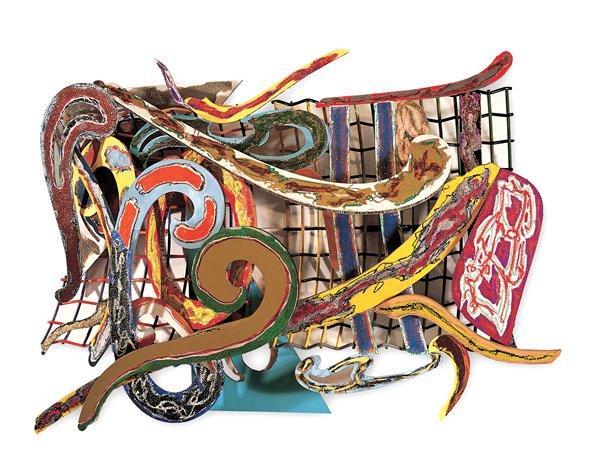
Collaborations and Exhibitions
Collaboration and exhibition played a significant role in Frank Stella's artistic journey. He collaborated with architects and artists, creating unique and innovative artworks that pushed the boundaries of traditional art.
Stella's collaborations with architects such as Richard Meier and Santiago Calatrava resulted in the creation of large-scale sculptures and installations. These collaborations allowed Stella to explore new artistic possibilities and create works that seamlessly merged art and architecture.
In addition to collaborations, Stella's works have been showcased in notable exhibitions throughout his career. His exhibitions at renowned institutions such as the Whitney Museum of American Art and the National Gallery of Art garnered critical acclaim and solidified his place in the art world.
Partnerships with architects and other artists
Frank Stella's partnerships with architects and other artists were instrumental in shaping his artistic career. Collaborating with architects such as Richard Meier and Santiago Calatrava allowed Stella to create large-scale sculptures and installations that integrated art and architecture seamlessly.
Stella's collaborations with architects resulted in the creation of iconic works such as the Federal Courthouse in Phoenix and the Museum of Contemporary Art in Barcelona. These partnerships not only expanded Stella's artistic repertoire but also showcased his ability to merge different artistic disciplines.
In addition to collaborations with architects, Stella also collaborated with other artists throughout his career. These partnerships facilitated the exchange of ideas and influenced the development of his artistic style. Stella's collaborations with fellow artists allowed him to push the boundaries of traditional art and create innovative and thought-provoking works.
Notable exhibitions throughout his career
Frank Stella's career was marked by numerous notable exhibitions at renowned institutions around the world. His works have been showcased in influential exhibitions that have garnered critical acclaim and solidified his place in the art world.
Exhibitions at institutions such as the Whitney Museum of American Art and the National Gallery of Art showcased Stella's artistic evolution and the breadth of his body of work. These exhibitions provided a comprehensive overview of Stella's career, allowing audiences to appreciate the depth and diversity of his artistic contributions.
Retrospectives of Stella's work have also been held, highlighting the significance of his artistic achievements. These retrospectives not only celebrated Stella's legacy but also provided a platform for critical analysis and appreciation of his artistic style.
Stella's Contribution to Contemporary Art
Frank Stella made a significant contribution to contemporary art through his innovative artistic style and groundbreaking techniques. His exploration of minimalism and maximalism challenged traditional notions of art and influenced future generations of artists.
Stella's minimalist approach, characterized by simplicity and geometric forms, paved the way for future artists to explore new artistic possibilities. His iconic "Black Paintings" series became a symbol of minimalism and solidified his place as one of the leading figures of the movement.
Stella's influence on contemporary art extends beyond minimalism. His experimentation with new materials and forms, as well as his collaborations with other artists, have inspired artists to push the boundaries of their chosen mediums and explore new artistic horizons. Stella's contributions to contemporary art continue to be celebrated and analyzed, cementing his place as a pioneering artist.
Influence on younger generations of artists
Frank Stella's innovative artistic style and groundbreaking techniques have had a profound influence on younger generations of artists. His exploration of minimalism and maximalism, as well as his use of new materials and forms, inspired artists to push the boundaries of traditional art.
Stella's contributions to the art world are recognized and celebrated by the Artists Rights Society (ARS), an organization founded to represent artists' rights through copyright, licensing, and monitoring. His advocacy for artists' rights and his support of the ARS have had a lasting impact on the art community.
Stella's influence on younger generations of artists can be seen in their embrace of innovative techniques and their exploration of new artistic possibilities. His legacy continues to shape the contemporary art landscape and inspire artists to push the boundaries of their creativity.
Legacy in abstract and minimalist art
Frank Stella's legacy in abstract and minimalist art is undeniable. His innovative artistic style and groundbreaking techniques have left a lasting impact on the art world.
Stella's exploration of minimalism challenged traditional notions of art and paved the way for future artists to embrace simplicity and geometric forms. His iconic "Black Paintings" series became synonymous with minimalism and solidified his place as a leading figure of the movement.
Stella's legacy in abstract and minimalist art is also significant. His use of bold colours and intricate shapes, such as the ever-changing colours in his iconic "What inspired him?" piece, created visually captivating compositions that continue to inspire artists today. His ability to push the boundaries of traditional art and his commitment to experimentation with colour have made him a pioneer in the field of abstract and minimalist art.
The Personal Side of Frank Stella
Beyond his artistic achievements, Frank Stella had a personal side that influenced his artistic philosophy and his impact on the art world.
Stella's philosophy on art and life emphasized the importance of embracing change and constantly pushing the boundaries of creativity. He believed that artists should continue to evolve and explore new artistic possibilities, rather than conforming to a singular style or approach.
Stella's impact extended beyond the canvas. He was known for his advocacy for artists' rights and his involvement with organizations such as the ARS. His commitment to supporting fellow artists and his efforts to ensure their rights were recognized continue to shape the art world.
Insights into his philosophy on art and life
Frank Stella's philosophy on art and life was shaped by his belief in the importance of embracing change and pushing the boundaries of creativity. He believed that artists should continually evolve and explore new artistic possibilities.
Stella saw art as a means of self-expression and a way to communicate with the world. He believed in the power of art to challenge traditional notions and provoke thought and emotion in the viewer.
In his personal life, Stella was known for his commitment to supporting fellow artists and advocating for their rights. He believed that artists should have control over their work and be fairly compensated for their contributions to the art world.
Stella's philosophy on art and life continues to inspire artists today, encouraging them to embrace change and push the boundaries of their creativity.
Stella's impact beyond the canvas
Frank Stella's impact extends beyond the canvas, leaving a lasting impression on the art world as a whole.
Stella's advocacy for artists' rights and his involvement with organizations such as the ARS have had a significant impact on the art community. His efforts to ensure that artists are recognized and fairly compensated for their work continue to shape the art world.
In addition to his advocacy, Stella's innovative artistic style and groundbreaking techniques have inspired countless artists to push the boundaries of traditional art. His commitment to experimentation and his ability to create visually captivating works have left an indelible mark on the contemporary art landscape.
Stella's impact beyond the canvas can also be seen in his collaborations with architects and other artists. These partnerships have resulted in the creation of unique and groundbreaking artworks that merge different artistic disciplines.
Conclusion
In reflection, Frank Stella's artistic journey has left an indelible mark on the world of contemporary art. From his early influences to the evolution of his unique style, Stella's legacy transcends beyond the canvas. His collaborations, iconic artworks, and profound impact on younger artists showcase his enduring contribution to the art world. Stella's philosophy on art and life serves as an inspiration, reminding us of the power of creativity and innovation. Through his work, he continues to influence and shape the realms of abstract and minimalist art, leaving behind a rich tapestry of artistic brilliance for generations to come.

Frequently Asked Questions
What motivated Frank Stella's shift in artistic style?
Frank Stella's shift in artistic style was motivated by a desire to evolve and explore new artistic possibilities. His experimentation with new materials and forms, combined with his experiences in New York City, influenced his artistic evolution and led to his transition from minimalism to maximalism.
Frank Stella, Towering Artist and Master of Reinvention, Dies at 87

